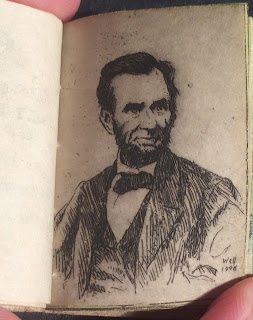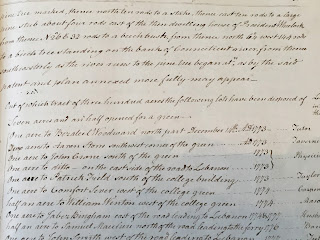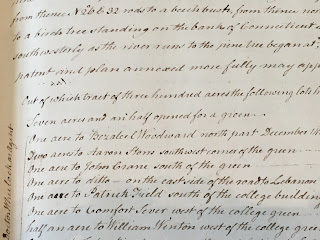 In a belated recognition of Memorial Day (or, an early acknowledgement of the Battle of Gettysburg’s anniversary), I scrolled through the catalog in search of items related to the Gettysburg Address. After clicking on Lincoln’s Gettysburg Speech, I was surprised to see that the book only measured about 1.25" x 1.75". Curious, I decided to find out more.
In a belated recognition of Memorial Day (or, an early acknowledgement of the Battle of Gettysburg’s anniversary), I scrolled through the catalog in search of items related to the Gettysburg Address. After clicking on Lincoln’s Gettysburg Speech, I was surprised to see that the book only measured about 1.25" x 1.75". Curious, I decided to find out more.This tiny text is the work of Bernhardt Wall, an American illustrator and etcher of the mid-20th century known for his quintessentially American postcards--usually lighthearted scenes of patriotism and cowboys. He was also a historian, interested in the biographies of interesting and impactful people, and he would chronicle his subjects’ lives in etchings. Wall was incredibly dedicated to his art--he handcrafted all 200 copies of Lincoln’s Gettysburg Speech himself, and he printed every page from an etched plate including the text. One can only imagine the patience it required to make so many tiny volumes, but Wall soon outdid himself--he went on to spend ten years etching an 85 volume pictorial biography of Lincoln.
With Lincoln’s Gettysburg Speech, Wall packs a lot of context into a tiny book. He prefaces the address with the invitation that Lincoln received to speak at Gettysburg, and he follows it with praise from publications like Harper’s Weekly, who called it “the most perfect piece of American eloquence.” Perhaps Wall’s most engaging additions are the illustrations--he intersperses the text with delicate etchings in black, brown and green ink. He not only includes scenes from Gettysburg, like the train station and the President speaking from the stage, but also other transcendent moments in American history, like the signing of the Declaration of Independence. On one particularly powerful page, in tiny lettering on an image of a graveyard, Wall highlights the central point of the Gettysburg Address and the holidays on which we remember it: “Remember the Hero Dead.”
With a book this small, you have to look closely and turn the pages slowly--which gives you the time to think carefully about the words and images inside. To see for yourself, ask for Miniature 121.
Posted for Emily Estelle ‘15 (Happy Graduation!)



